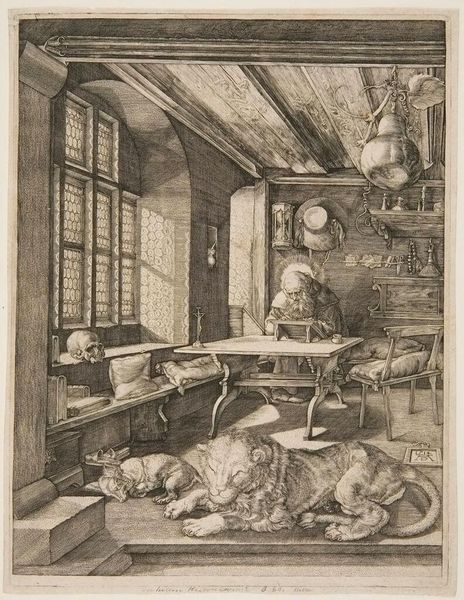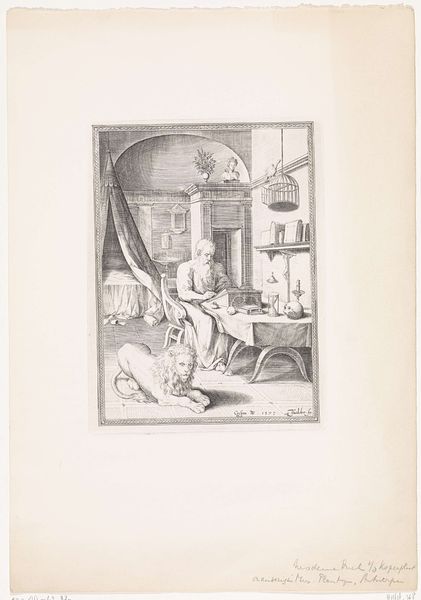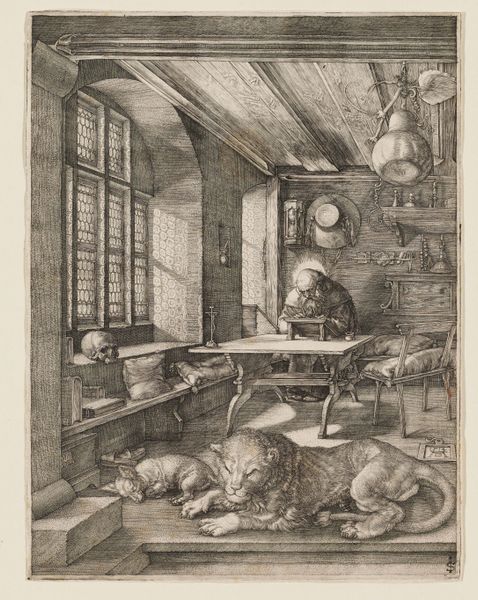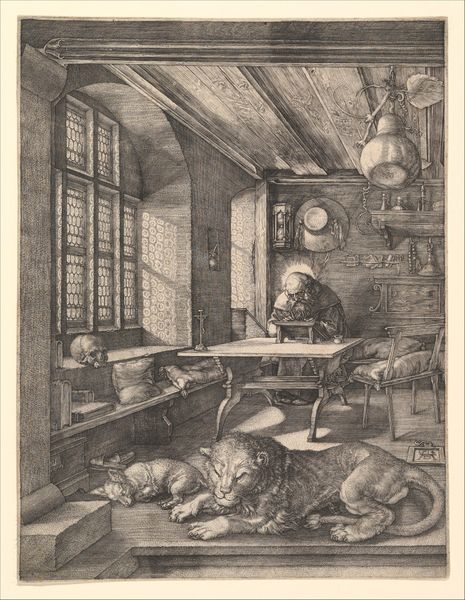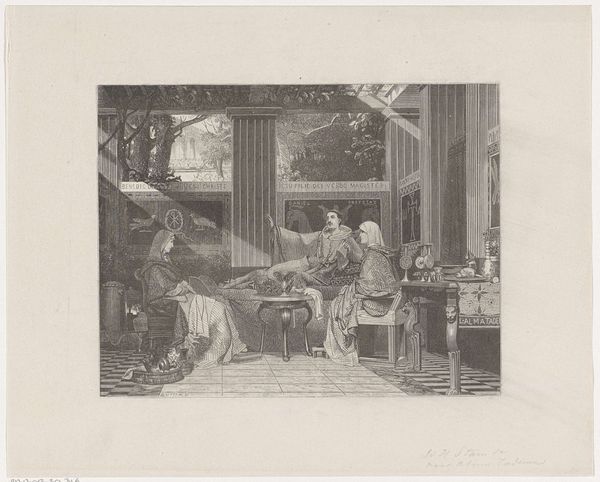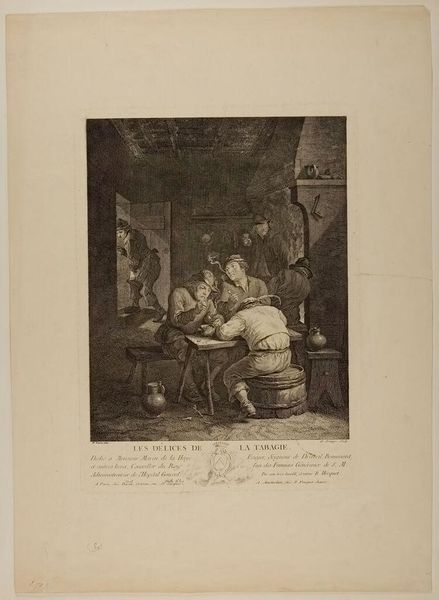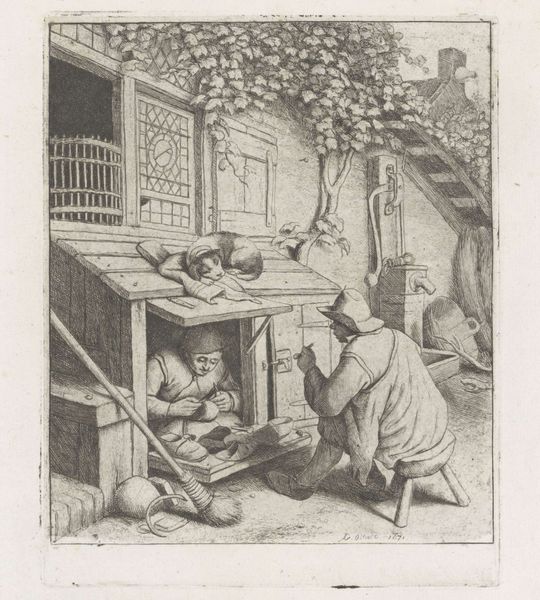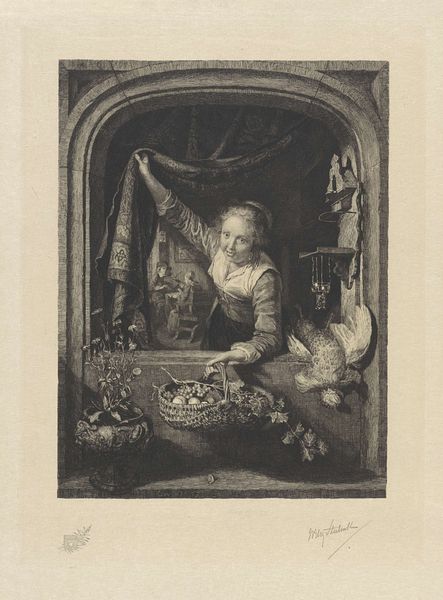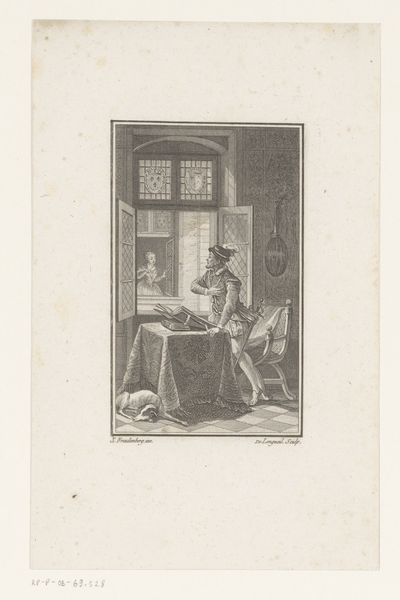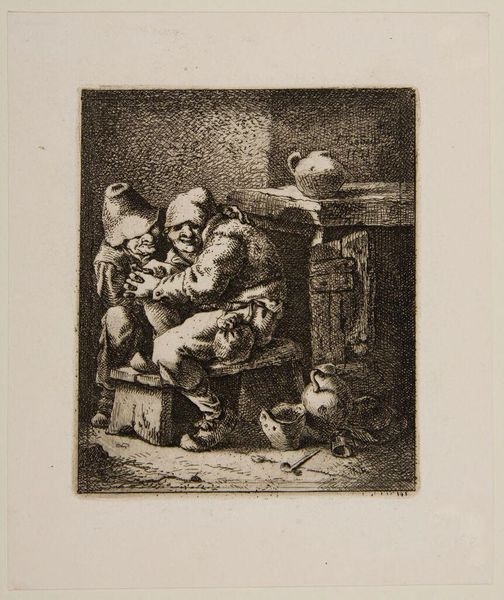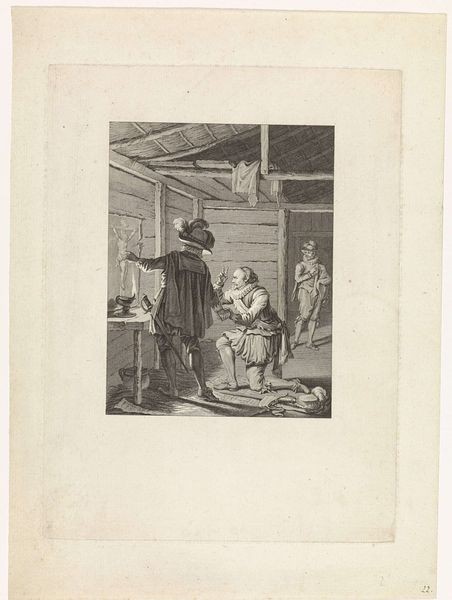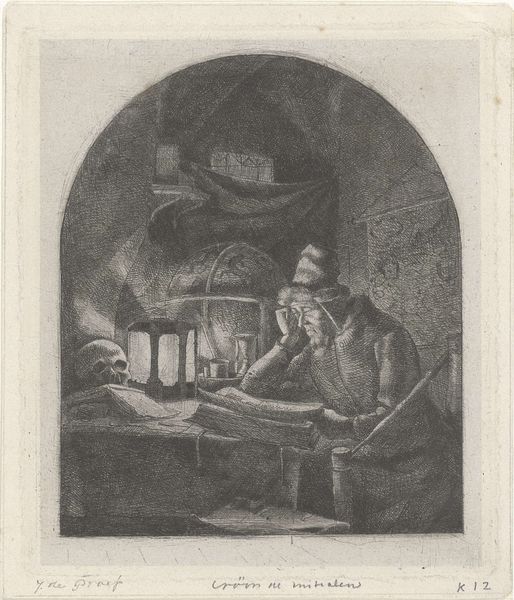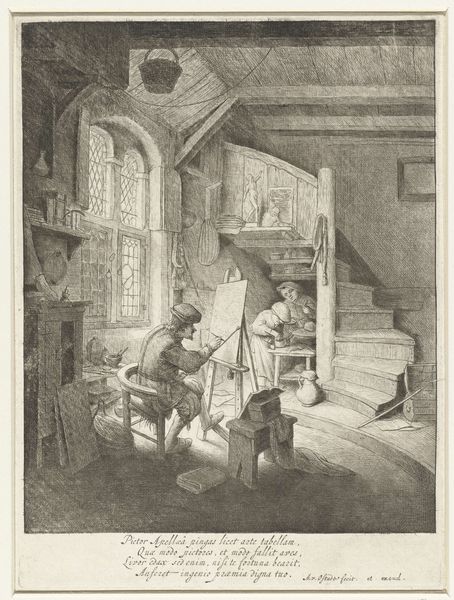
Dimensions: image: 24.3 Ã 18.8 cm (9 9/16 Ã 7 3/8 in.) sheet: 35.3 Ã 27.8 cm (13 7/8 Ã 10 15/16 in.)
Copyright: CC0 1.0
Curator: Looking at this reproduction of "Saint Jerome in His Study," I’m immediately drawn to the pervasive sense of quietude. Editor: It feels very staged, doesn't it? Consider the materials used in his study: the craftsmanship of the desk, the precise rendering of the lion's fur. What does all this meticulous detail say about labor and class? Curator: It certainly reflects a particular kind of privilege, but consider also the historical context. Jerome’s translation of the Bible into Latin was a monumental act of cultural production that shaped Western thought for centuries, and we must view it through that intersectional lens. Editor: Yes, but the tools of that production—the ink, the paper, the very room itself—speak to the material conditions that made such a translation possible. Curator: And let’s not forget how depictions of Jerome have served as tools of power, reinforcing certain patriarchal structures throughout art history. Editor: Indeed, and this work reveals how those structures were built, quite literally, with earthly materials. Curator: Understanding these debates, both material and ideological, helps us unpack its historical and cultural significance. Editor: Absolutely, by questioning the tools of production, we expose the foundations of such interpretations.
Comments
No comments
Be the first to comment and join the conversation on the ultimate creative platform.
